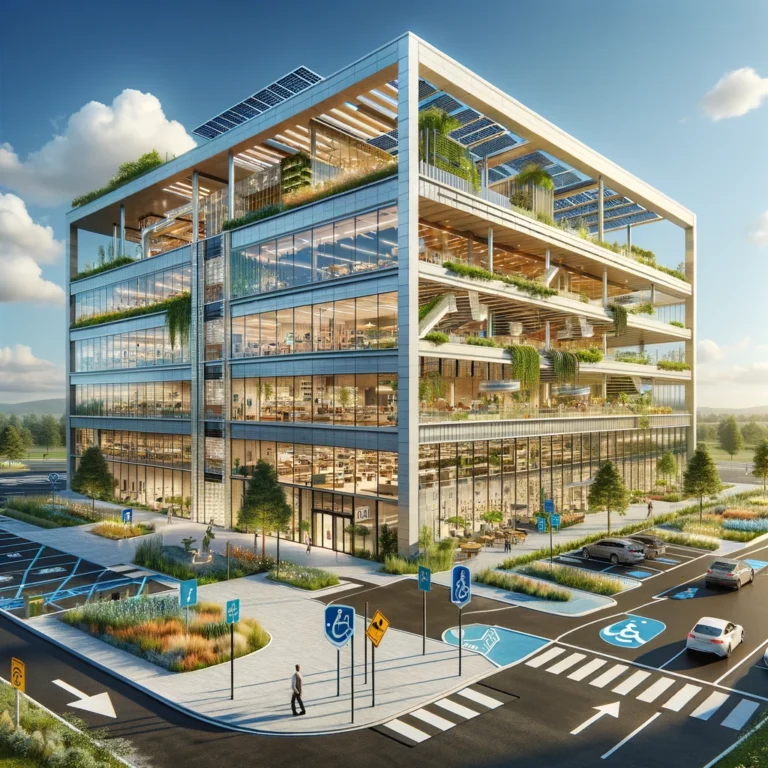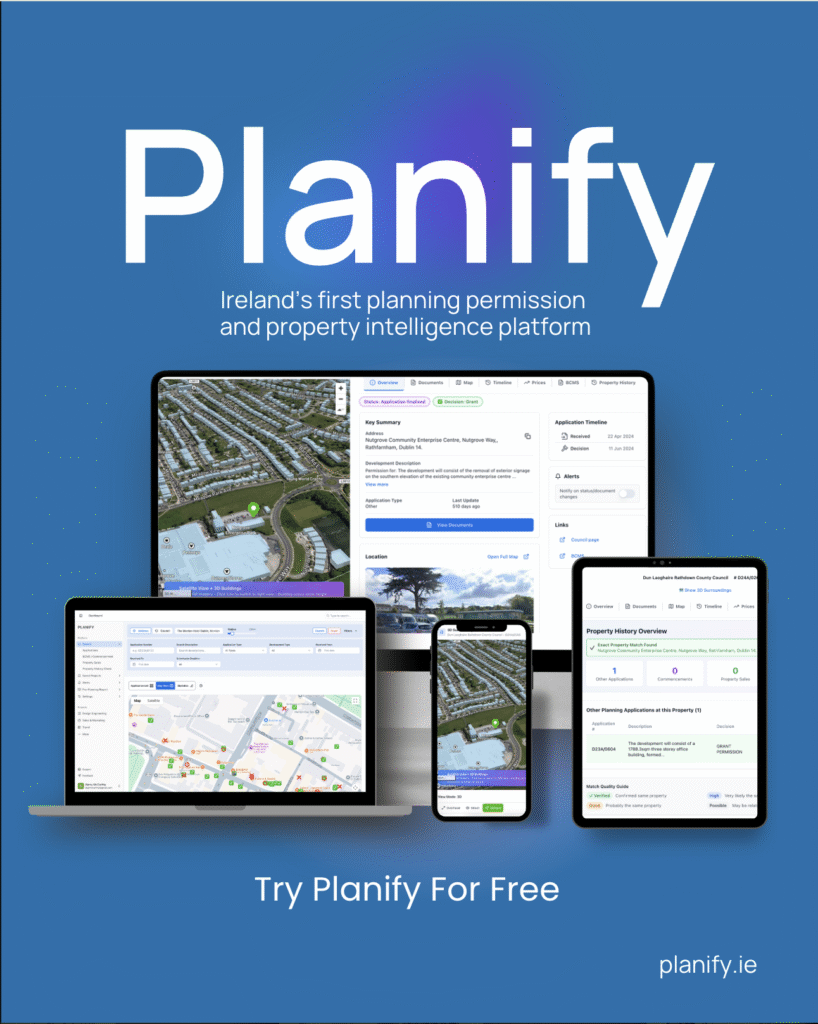Compliance with Building Regulations and Standards

Contents
Introduction
Compliance with building regulations and standards is a fundamental aspect of the planning and development process for commercial projects. These regulations are designed to ensure that buildings are safe, healthy, and efficient to meet the needs of the public and the environment. This guide will delve into the key areas of compliance that developers must consider when seeking planning permission for a commercial development.
Understanding Building Regulations and Standards
Building regulations and standards are a set of requirements established by legislation that outline the minimum standards for construction, design, and alterations to virtually every building. They cover a wide range of criteria including structural integrity, fire safety, energy efficiency, accessibility, and sustainability among others. Our AI Assistant has a direct knowledge of all building regulations and technical guidance documents in Ireland. Click here to ask a question!
Key Areas of Compliance for Building Regulations & Commercial Planning Permission
- Structural Safety
Structural safety regulations ensure that buildings are designed and constructed to withstand both the loads and stresses they will be subjected to over their lifespan without collapsing. This includes considerations for the type of soil, wind loading, snow loads, and seismic activity in the area.
- Fire Safety
Fire safety is a critical aspect of building regulations, encompassing the design, construction, and materials used in buildings to prevent, contain, and mitigate the effects of fire. This includes the installation of fire alarms, fire-resistant materials, emergency exits, and fire suppression systems.
- Energy Efficiency
Energy efficiency regulations are designed to reduce the amount of energy buildings use, which in turn reduces greenhouse gas emissions and the buildings’ environmental footprint. This includes requirements for insulation, heating and cooling systems, lighting, and other factors that affect a building’s energy consumption.
- Accessibility
Accessibility regulations ensure that buildings are accessible to people with disabilities. This includes provisions for ramps, lifts, accessible toilets, and signage to ensure that everyone can use the building safely and comfortably.
- Health and Well-being
Regulations concerning health and well-being cover aspects such as ventilation, lighting, and sanitation facilities. These regulations are designed to ensure that buildings provide a healthy and comfortable environment for occupants.
- Sustainability and Environmental Protection
Increasingly, building regulations are incorporating sustainability and environmental protection measures. This can include requirements for sustainable materials, waste reduction during construction, water conservation, and measures to protect local wildlife and biodiversity.
The Process of Ensuring Compliance
- Pre-Design Phase
Before the design process begins, it’s crucial to have a thorough understanding of the applicable building regulations and standards. Consulting with architects, engineers, and specialists who are familiar with local regulations can save time and resources in the long run.
- Design Phase
During the design phase, compliance should be an integral part of the planning process. This involves selecting appropriate materials, designing systems that meet energy efficiency standards, and ensuring that the layout and facilities are accessible.
- Construction Phase
Compliance with building regulations should be monitored continuously throughout the construction phase. This often involves inspections by local building control bodies or approved inspectors to ensure that the work complies with the regulations.
- Completion and Beyond
Once construction is complete, a final inspection is typically required to certify compliance. However, compliance does not end once the building is occupied. Ongoing maintenance and alterations must also adhere to building regulations.
How can developers effectively navigate the building regulations approval process?
- Understand the Regulations
The first step in effectively navigating the approval process is to gain a comprehensive understanding of the building regulations that apply to your project. This includes not only the national building standards but also any additional local requirements. Familiarise yourself with the specifics related to structural integrity, fire safety, energy efficiency, accessibility, and any other relevant areas. Resources such as the Building Regulations Advisory Committee or professional consultants can provide valuable insights.
- Early Engagement with Authorities
Early and proactive engagement with the local building control authority or approved inspectors can significantly streamline the approval process. This engagement can provide clarity on any specific requirements or concerns that may need to be addressed in your application. It also establishes a positive working relationship with the authorities, which can be beneficial throughout the construction process.
- Utilise Pre-application Advice
Many local authorities offer pre-application advice services. This service allows developers to discuss their proposals with building control officers before submitting a formal application. Taking advantage of this service can help identify potential issues early on, reducing the likelihood of delays or rejections later in the process.
- Prepare a Comprehensive Application
A well-prepared and detailed application is key to a smooth approval process. Ensure that your application includes all necessary documentation, plans, and reports that demonstrate compliance with building regulations. This may include architectural drawings, structural calculations, fire safety plans, and energy performance assessments. Clearly highlighting how your project meets or exceeds the required standards can facilitate a quicker review process.
- Choose the Right Approval Route
There are typically two routes to obtaining building regulations approval: the Full Plans application and the Building Notice procedure. The Full Plans route involves submitting detailed plans for review before construction begins, which, once approved, provides greater certainty. The Building Notice route is quicker and less detailed but carries more risk as compliance is assessed during construction. Choose the route that best suits the complexity and timeline of your project.
- Engage Qualified Professionals
Engaging with architects, engineers, and consultants who have a strong track record of compliance with building regulations can greatly enhance the efficiency of the approval process. These professionals can ensure that your plans and documentation meet all necessary standards, reducing the likelihood of issues arising during the review process.
- Address Feedback Promptly
If the reviewing authority requests further information or revisions to your plans, addressing these requests promptly and comprehensively is crucial. Quick and effective responses demonstrate your commitment to compliance and can help keep the project on schedule.
- Stay Informed on Updates
Building regulations and standards can evolve, so staying informed about any changes that may affect your project is important. Regularly consulting with industry professionals and regulatory bodies can help you anticipate and adapt to any updates in the regulations.
Conclusion
Compliance with building regulations and standards is essential for the success of any commercial development seeking planning permission. By integrating compliance into every stage of the development process, developers can ensure that their projects are safe, efficient, and sustainable. This not only meets legal requirements but also contributes to the overall quality and value of the development.




